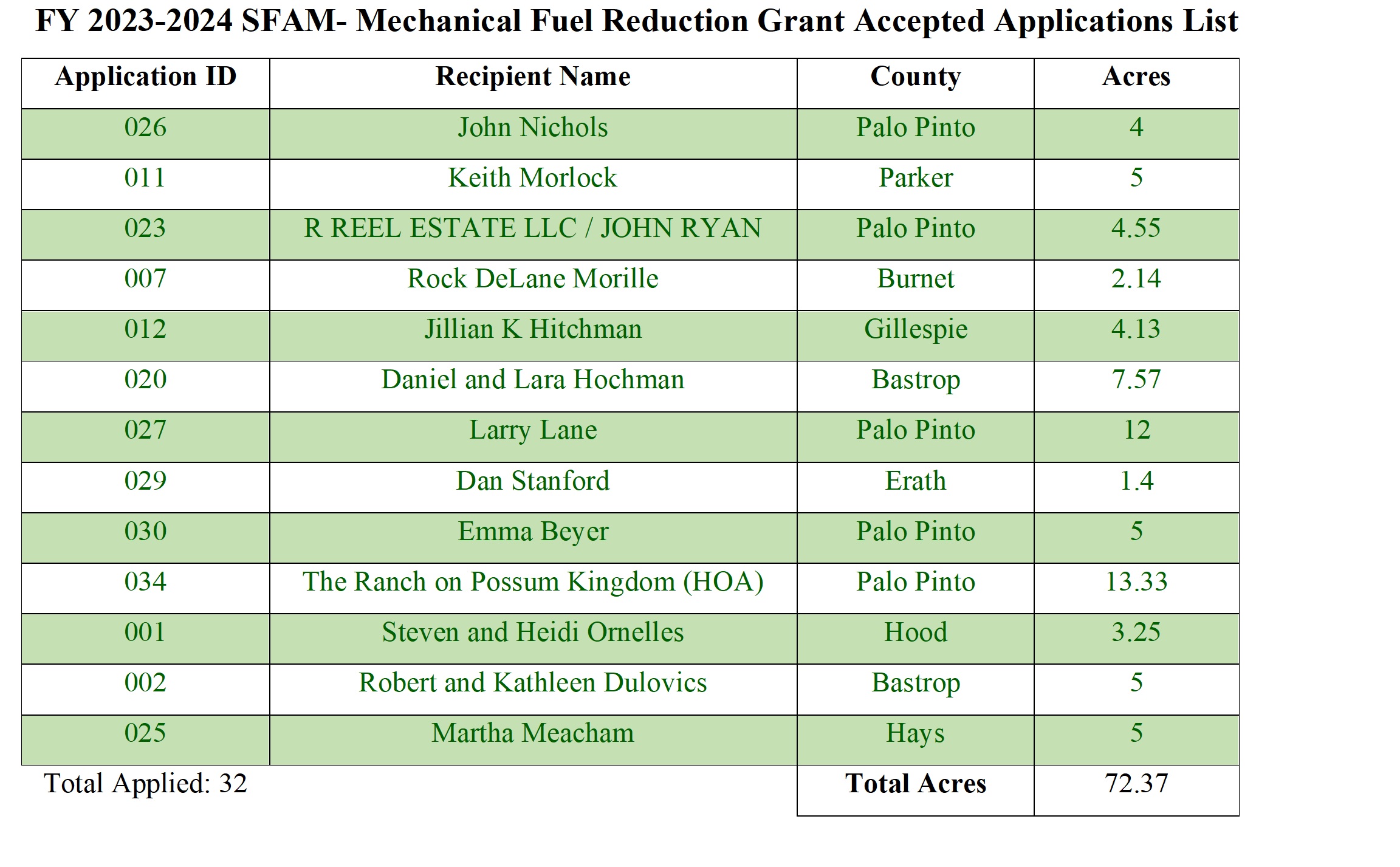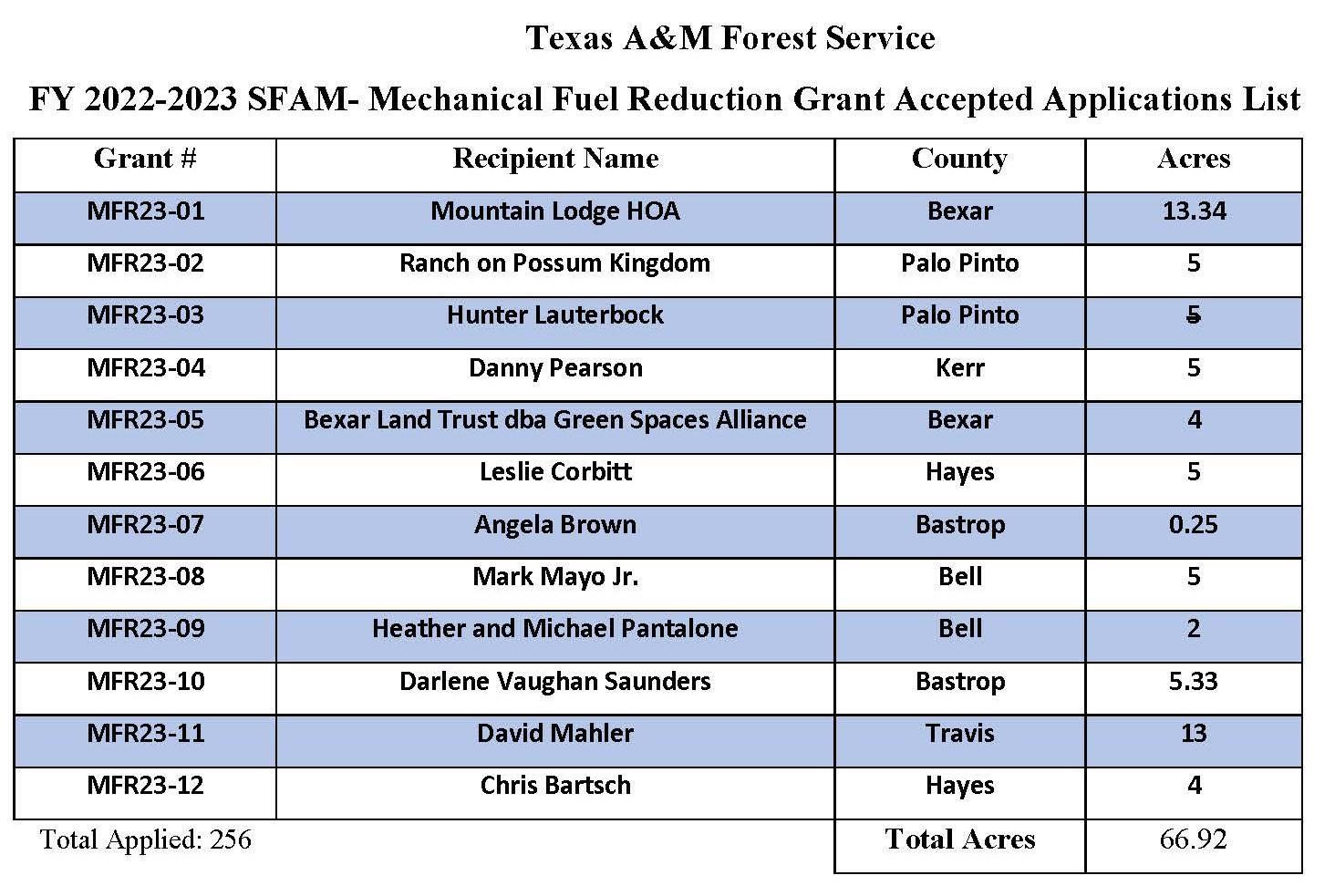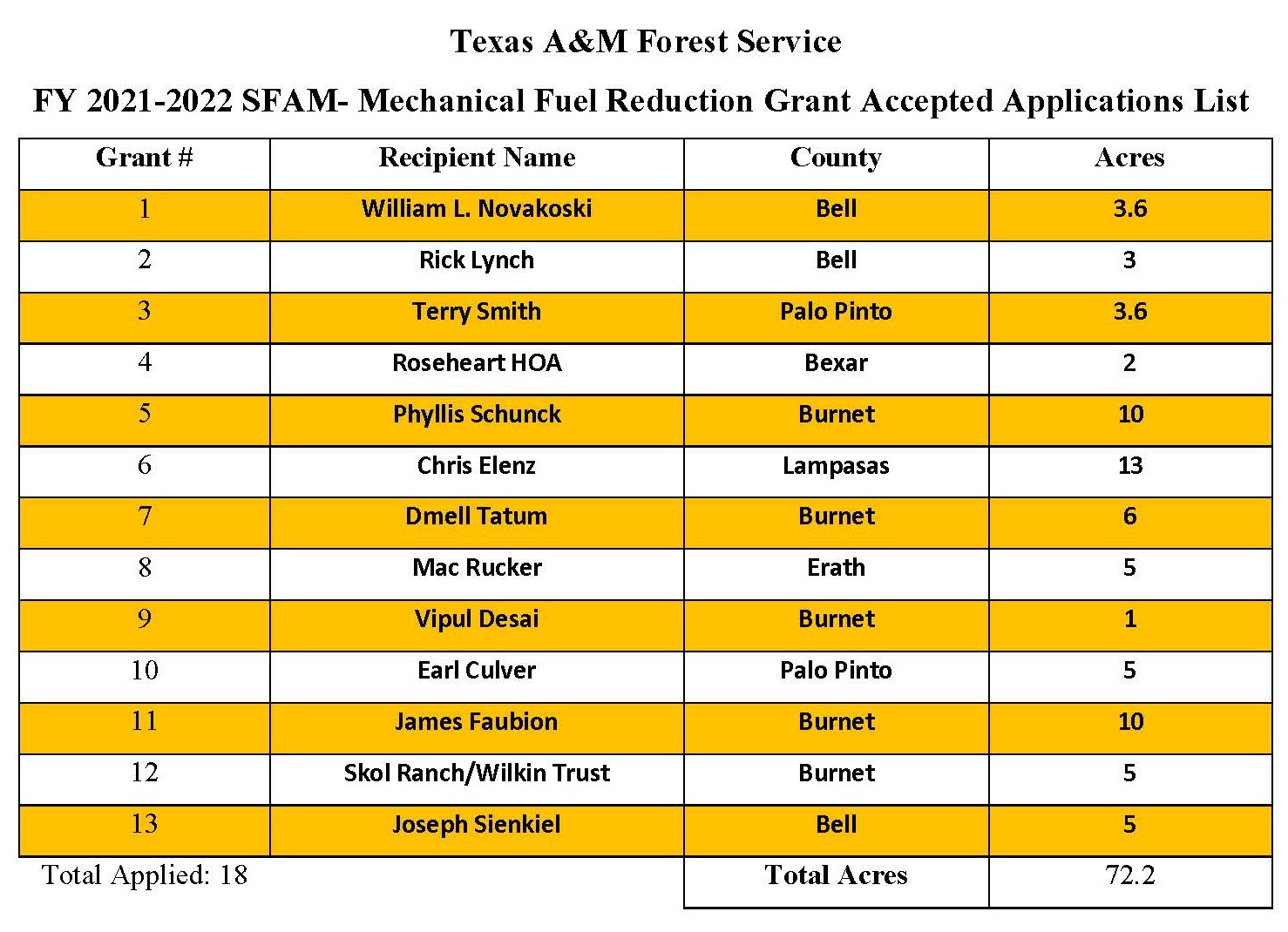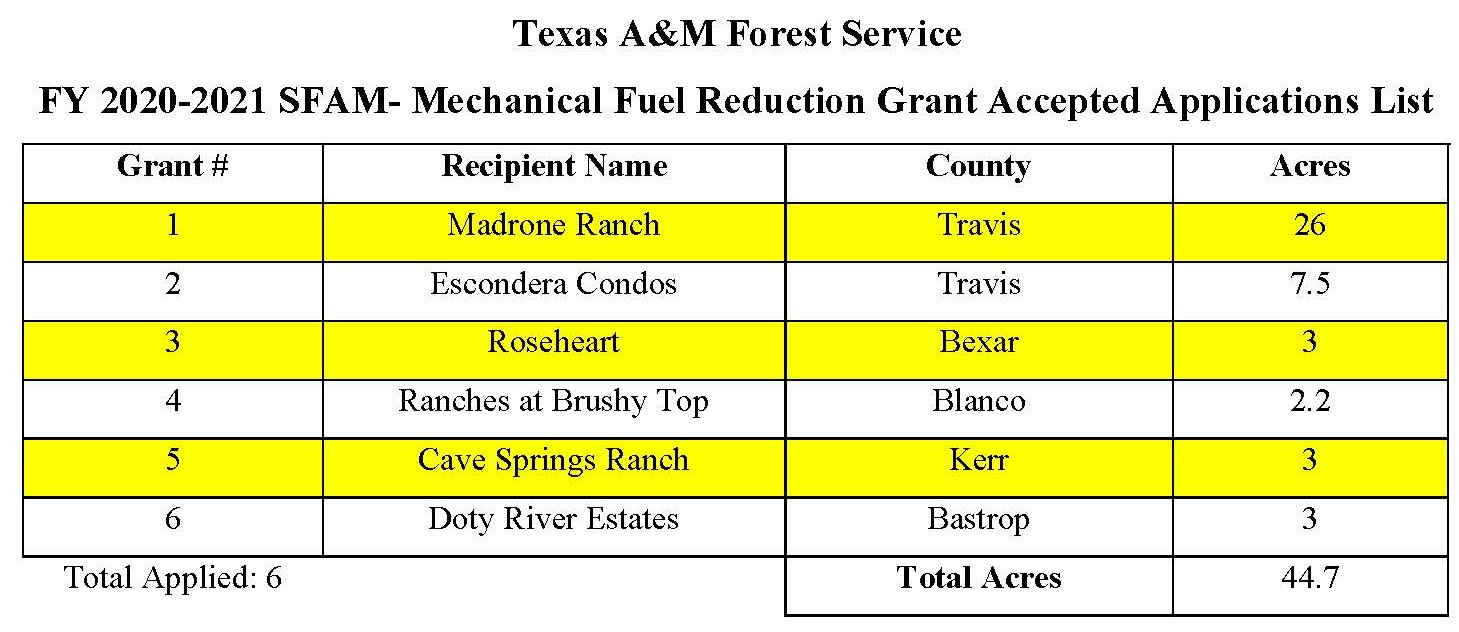Central Texas Communities at Risk (CTX CAR) - Mechanical Fuel Reduction Grant
Grant Funded Through USDA –
Forest Service
Award # 22-DG-11083148-001
& 23-DG11083148-001 CFDA: 10.664
CFDA #10.664
GRANT APPLICATION PERIOD NOW OPEN ONLINE THROUGH APRIL 30th
To apply, click the link at the bottom of this page.
Scope of Project: Reduce
the risk of home loss to wildfire through the use of accepted mechanical fuel
reduction practices. Projects will be located in Burnet, Comal, Hays and
Williamson Counties. These 4 counties in Central
Texas were identified by Texas A&M Forest Service Mitigation and Prevention
Department and Applied Technology Department as high priority (see eligible map). The goal of
the grant is to protect communities at risk by completing fuel reduction on
private and public lands.
Grant recipients will be reimbursed for actual costs up to
the thresholds listed below for conducting mechanical fuel reduction projects
on their property. Work will be conducted by a hired contractor of the
landowner’s choosing. The contracting service hired must not be affiliated with
the landowner. Work cannot be conducted by the landowner. Previous work
conducted before pre-inspections will not be accepted. Individual landowners
may submit more than one application per different project location. Landowners
may be approved for more than one application.
Maximum Total Reimbursement per recipient: Grant
recipients will be reimbursed actual costs not to exceed $750 per acre (see
treatment descriptions below). Total limit of reimbursement per grant recipient
is $10,000. The minimum reimbursement per grant recipient is $750, even if area
treated is less than 1 acre. Reimbursable costs are limited to those
expenditures listed on a contractor's invoice that are directly related to fuel
reduction actions that create defensible space around a structure, the installation
of the fuel breaks to protect structures, and/or the rental of equipment that
is directly related to the fuel reduction activities or installation of the
fuel break. The
purchase of equipment is not reimbursable. Paid in full invoices are
required documentation prior to our agency reimbursing actual costs.
Hand-cutting to Create Defensible Space ($750/Acre) –Thinning,
pruning, cutting, and debris disposal to create defensible space around homes
and structures in the wildland urban interface. Trees are thinned with chainsaws
and/or other tools to remove them from the home ignition zone, prevent fire spreading
between crowns, and allow access for firefighting. Branches of remaining trees
are pruned up, ladder fuels removed or reduced, bushes and flammable vegetation
in the home ignition zone removed or reduced. All debris generated from these
activities, including all dead woody debris, and cut limbs and brush, must be
removed from the property or mechanically reduced to chips. Projects that create
defensible space between 0 to 100 ft of the house/structure will be given
priority. These projects may occur up to 300 ft in all directions from the home
and/or associate structures.
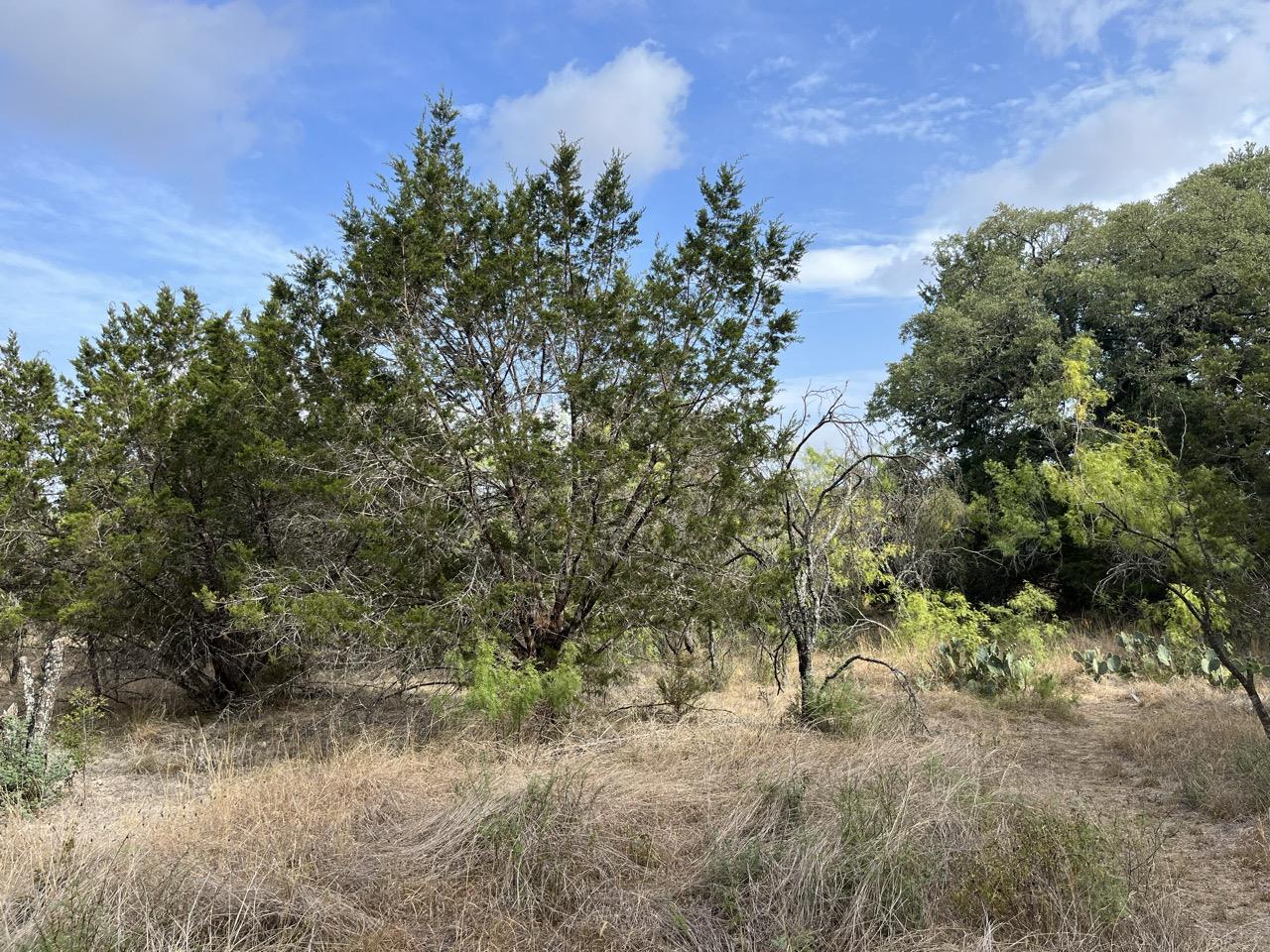
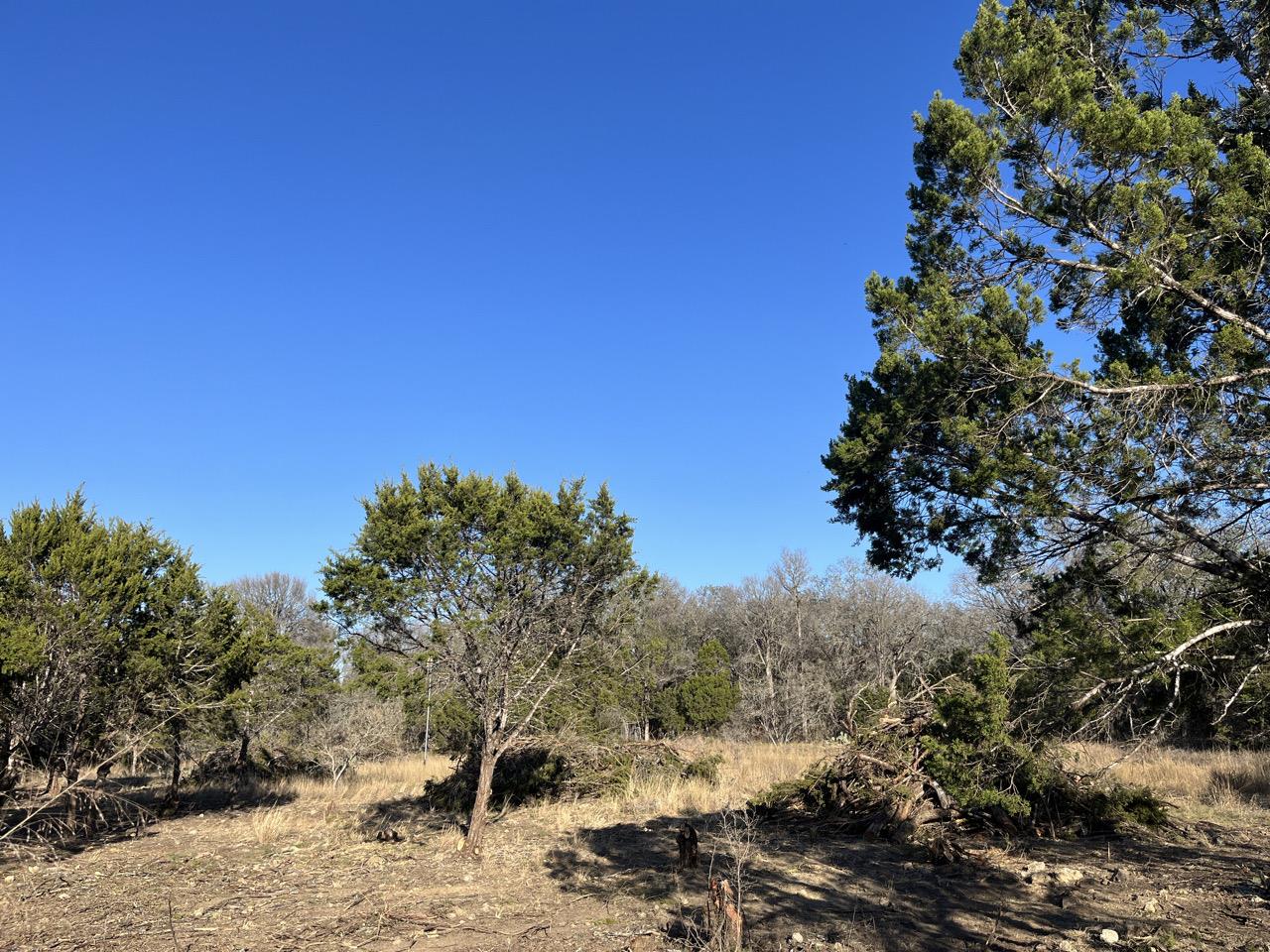
Hand-cut or Mulched Fuel Break ($750/Acre) – The fuel
break is a linear treatment a minimum of 66’ wide and positioned to protect
homes or structures from wildfires. Trees are thinned with hand cutting tools or
a forestry mulcher (masticator) so open gaps are created in crown overstory.
Branches of remaining trees are pruned up; dead woody debris and understory
brush is removed. Hand cut fuel breaks should be located in strategic locations
like along property lines, along access roads, or between unmanaged lands and manicured
areas. Priority will be given to projects that are positioned to protect homes
and structures. These projects may also occur as landscape-wide treatments
within wildland areas between homes in a community.
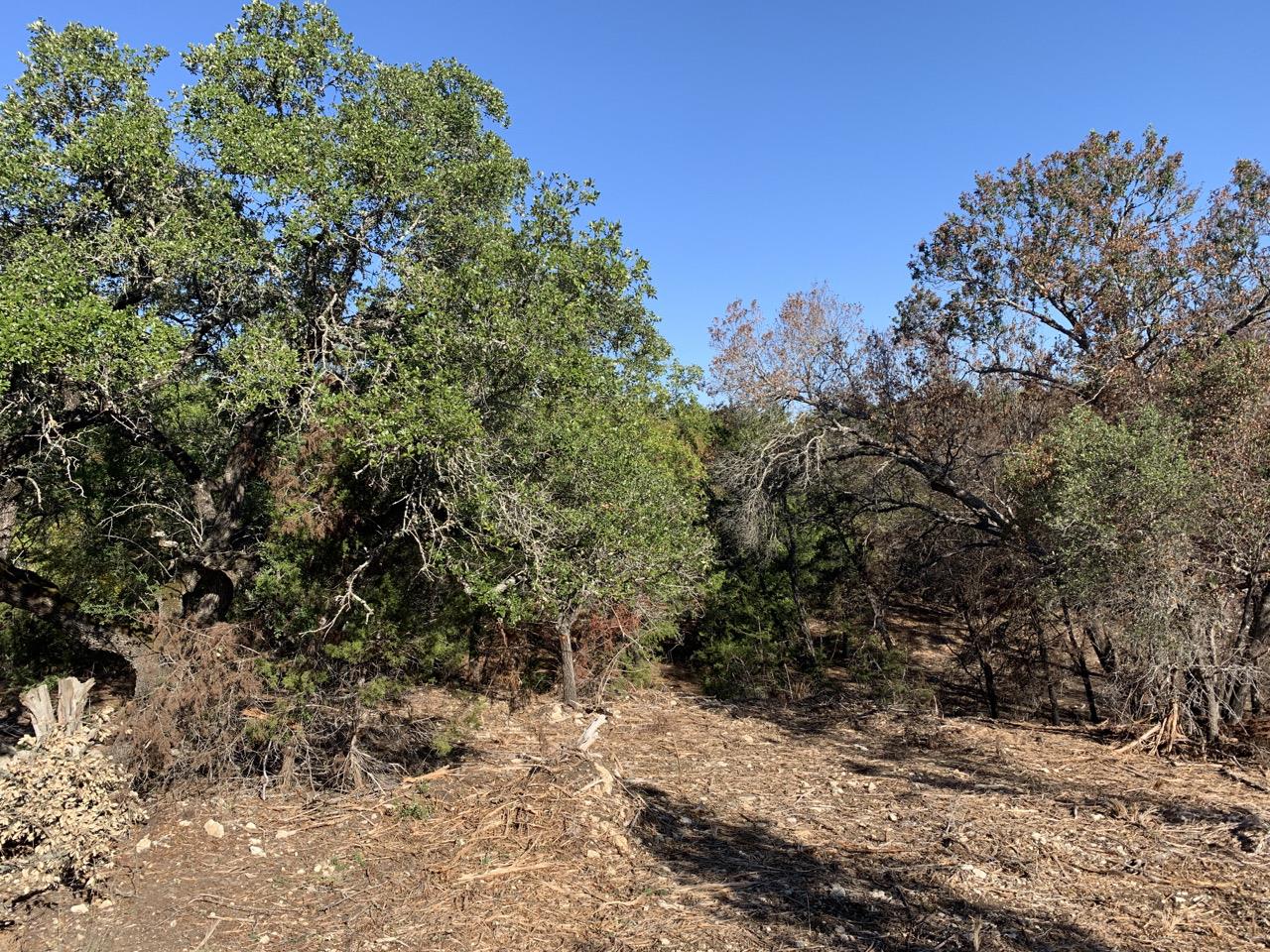
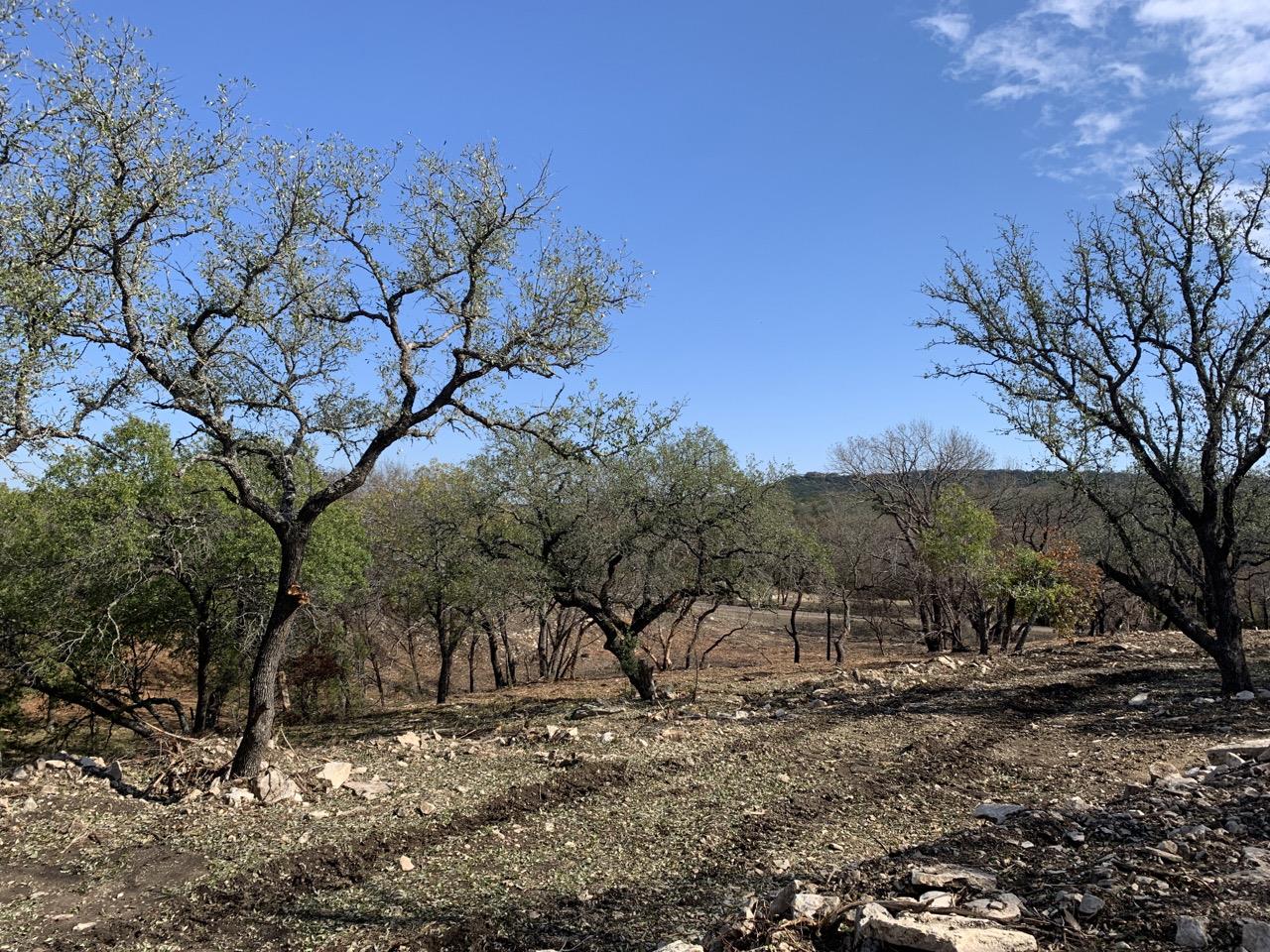
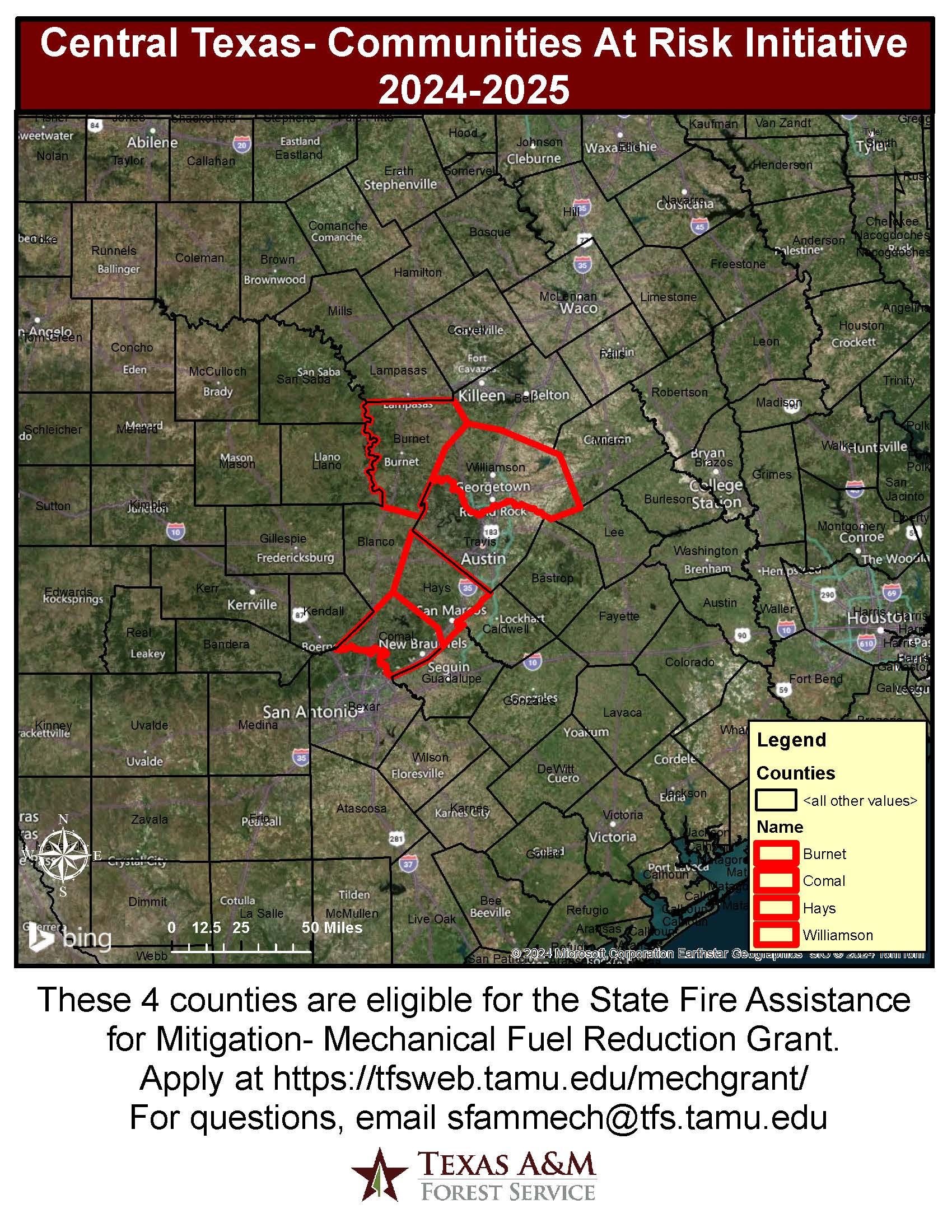
Application Process: This grant is competitive, and
selection will be based on the goal of reducing wildfire risk to homes. Applications
for the grant will open April 1st and close April 30th. They
will then be reviewed by Texas A&M Forest Service Fuels Team and
approved/declined based on the intent of the grant. Approval or declined
notification letters for applicates will be mailed by May 31st. We
do not guarantee acceptance based on previous year approvals.
The landowner is required to complete all questions on the
online application to be considered. The landowner will need to create a map of
the proposed project area displaying property owner’s boundary, location of
proposed fuel treatment or fuel break, dimensions of treatment, and landowner
name with aerial imagery as map background. All incomplete maps may result in
disqualification. The applicant must submit contractor information and an
estimate ($) of service. The last section of the online application will help
calculate the estimated reimbursement using the entered project type and
dimensions. Pictures of the landscape, topography and overall vegetation may be
submitted for consideration. Individual landowners may submit more than one
application per different project location. Treatment dimensions on one
application should not overlap another application. Landowners may be approved
for more than one application
If approved, the approval letter will include a W-9 Tax Form,
a Terms of Conditions Form, and your submitted application for the landowner to
sign and return to Texas A&M Forest Service within 5 weeks. Applicants may
switch contractors until the signed application with updated contractor
information is received. Once all documents are received by Texas A&M
Forest Service, the landowner will receive a letter to coordinate a
pre-inspection. Only after the pre-inspection has been completed may work
begin. If the contractor declines or fails to complete the work by the
deadline, then the applicant may re-apply the following grant cycle. This is
only available on the first occurrence. Failing to complete the work 2 years in
a row will result in automatic disqualification the 3rd cycle/year.
A Texas A&M Forest Service staff member will reach out
to schedule the pre-inspection. Any work conducted before pre-inspections will
not be considered for reimbursement. The Texas A&M Forest Service employee
will take pre-treatment photos, confirm the dimensions of your project, and
answer any remaining questions about the grant process.All
debris generated from the project must be removed from the property or
dispersed as mulch or chips. If any debris generated from this project is left
on landowner’s property, we may not cover reimbursement.
The hired contractor will have up to 180 days to complete all
work. If work is not completed by the end of the 180-day term, the landowner
can be reimbursed for the acreage that was completed. The landowner may also
apply again next year for any acreage missed. No extensions will be granted
this year. Invoices must have project address and county, description of work
conducted, acreage completed and show the balance paid in full or zero
balanced.
After the contractor completes their
work, the landowner will contact us to schedule a post-inspection visit which
will verify any work completed. The post-inspection will calculate acreage and
verify dimensions were met in the approved location. After the post-inspection,
the landowner must submit their receipts and invoices for reimbursement. Once
the post-inspection is conducted and the reimbursement forms have been
submitted, Texas A&M Forest Service will process all documentation and mail
your reimbursement check.
For more
information, visit our webpage https://tfs.tamu.edu/mechgrant/
or email us
at sfammech@tfs.tamu.edu.
*At all times during and after
termination of this award, grant recipient shall, to the extent authorized
under Texas law, indemnify and hold harmless Texas A&M Forest Service, The
Texas A&M University System, its regents, officers, employees and
affiliates against any claim, proceeding, demand, liability, or expenses
(including legal expenses and reasonable attorneys’ fees) which relates to
injury to persons or property or against any other claim, proceeding, demand,
expenses and liability of any kind arising out of or in connection with grant
recipients performance under this grant agreement.*
CTX CAR Mechanical Fuel Reduction Grant Timeline
CTX CAR Mechanical Fuels Reduction Grant FAQ
CTX CAR Mechanical Fuels Reduction Grant Eligibility Map
SFAM Mechanical Fuels Grant Summary FY 2022
